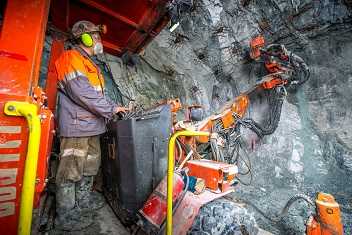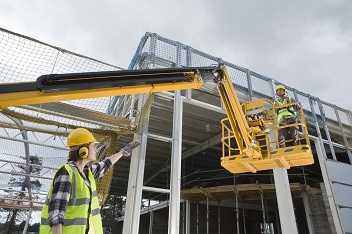Personal Protective Technology Program

Burden, Need and Impact
NIOSH strives to maximize its impact in occupational safety and health. The Personal Protective Technology Program identifies priorities to guide investments, and base those priorities on the evidence of burden, need and impact. Below are the priority areas for the Personal Protective Technology Program.
PPT interventions to reduce workplace illnesses and injuries
Burden
NIOSH and the Bureau of Labor Statistics’ survey of respirator use and practices among U.S. private sector employers revealed that 281,776 establishments require employees (n=3.3 million) to use respirators1. Of these establishments, 91% had at least one indicator of a potentially inadequate respiratory protection program, while 54% had at least five indicators. The survey findings suggested that large numbers of employers may not follow NIOSH recommendations and Occupational Safety and Health Administration (OSHA) and Mine Safety and Health Administration (MSHA) requirements for the selection and use of respirators. In 2010 and 2013, general medical and surgical hospitals reported more lost time nonfatal occupational illnesses and injuries than any other industry. OSHA reported in FY 2015 that respiratory protection was the fourth most frequently cited standards violation2. The Respiratory Use Evaluation in Acute Care Hospitals study revealed that healthcare workers are unclear about various aspects of respiratory protection. Personal Protective Equipment (PPE) non-compliance or improper PPE use could potentially be putting workers at risk for illness and injury. While this type of survey has not been conducted for other types of PPE, the Ebola response revealed similar issues with protective gowns and other types of PPE used to protect workers from Ebola.
Need
Over the past ten years, NIOSH and stakeholders have developed a number of interventions aimed at improving compliance and use of PPE with an emphasis on respiratory protection. There is still a need to develop more effective interventions in healthcare. Surveillance data are needed to fully understand the PPE issues across other industry sectors.
NIOSH is recognized nationally and internationally for its expertise in PPE. This expertise and leadership makes it uniquely suitable to use research outputs to develop PPE interventions. PPE issues are evident in small businesses especially in the services sector; however, surveillance data are needed to quantify the extent of the issues. Anecdotal evidence in the nail salon and auto repair industry warrant exploration of improved interventions in these industries.
Impact
The PPT program has and will continue to deliver health and safety interventions for the nation’s workers. Highlights include:
- The PPT Program developed the NIOSH Trusted-Source web page (ranked in the top CDC 100 web pages) to improve worker’s knowledge on respiratory protection and to promote safety and health.
- In healthcare, the major findings of the respirator evaluation studies have been used to develop, in collaboration with partners, educational products including an online ten-module occupational health nurse course, a Respiratory Protection Program Toolkit, and a Respiratory Protection monograph. Flyers have been published in English and Spanish to alert healthcare workers to the hazards associated with the airborne transmission of certain infectious diseases and the importance of respiratory protection in preventing adverse effects.
- In public safety, the Program has delivered chemical, biological, radiological, and nuclear (CBRN) training seminars and fact sheets to partners to assist PPE users with most effectively using their CBRN respirators.
- In mining, the Program completed an assessment of kneepads used by miners that addressed the issues of improved fit and comfort.
- The Program prepared and delivered webinars to students in NIOSH Education and Research Centers (ERCs), training the next generation of occupational safety and health specialist on proper PPE selection and use.
The impact of PPT program activities is improved PPE use and guidance for these workers. Healthcare workers can continue to benefit from PPE interventions, and many can be adapted for other industries.
References
- U.S. Bureau of Labor Statistics, Respirator Use and Practices. http://www.bls.gov/iif/oshwc/osh/os/osnr0014.pdf
- Occupational Safety and Health Administration. Top 10 most frequently cited OSHA standards violated in FY2015. https://www.osha.gov/oshstats/commonstats.html
Improve or develop PPT standards, regulations, equipment, and technology to reduce workplace illnesses and injuries
Burden

The Bureau of Labor Statistics (BLS) Census of Fatal Occupational Injuries identified 4,679 fatal occupational injuries in 2014.1 Of these, 19% the cause was falls from elevation, exposure to harmful substances and exposure to oxygen deficiency. In addition, BLS reported 1,157,410 occupational non-fatal injuries in 2014 that required days away from work.2 These fatalities and injuries may have been prevented or lessened through the use of PPE.
The threat of emerging infectious diseases, such as Ebola virus disease and pandemic influenza, has highlighted the need for effective PPE to protect both healthcare workers and their patients. Recent NIOSH research suggests that some isolation gowns may not meet the performance standards which may prevent pathogens from entering the body through the mucous membranes or broken skin. Uncomfortable PPE is a common complaint and causes additional burden for healthcare workers. PPE reduces the ability of the wearer to cool off by limiting heat transfer from the body through sweat evaporation, convection, and radiation. In addition, many other workplace settings (construction, agriculture, wildland firefighting, hazardous materials response, and manufacturing) require employees to wear PPE for extended periods of time in hot, humid, and extremely challenging environments.
Need
NIOSH is well-respected for its work in respiratory protective device research, certification, and standards development. The past ten years has seen an increased emphasis in research on comfort, fit, and usability of PPE, especially for the healthcare community. Healthcare worker exposures indicate the need for improved PPE and PPE interventions to keep them safe. The Department of Veterans Affairs led a U.S. Federal government interagency effort, the Better Respiratory Equipment using Advanced Technologies for Healthcare Employees (Project BREATHE). Project BREATHE identified 28 consensus recommendations to improve respiratory protective equipment used by healthcare workers. The PPT program has actively supported and advanced Project BREATHE to include recommendations for a performance standard for improved respiratory devices for healthcare workers, and also worked with manufacturers to develop and test new respirator designs. The newly designed respirators provide improved comfort, fit and usability for healthcare workers and workers in other sectors. In addition, since 2011 NIOSH has increased its emphasis on protective clothing research where gaps were evident.
NIOSH is uniquely suited to perform PPE research. NIOSH evaluated the PPE ensembles currently used in West Africa and around the world for Ebola and collaborated nationally and internationally on efforts to develop solutions to improve PPE configurations in the future. This effort had significant implications for U.S. healthcare and public health workers here in the United States and working abroad. NIOSH has extensive experience in developing respirator fit test panels and anthropometric head forms which will improve the fitting characteristics of respirators and enhance the protection provided. Research is needed to develop innovative PPT designs and test methods to improve comfort, fit, and usability of body, hand, head, eye, and foot protective equipment, and protective ensembles. A better understanding of the anthropometric characteristics of healthcare workers could assist in improved design and fitting characteristics of PPE for these workers.
Impact
NIOSH respirator research is leading to new respiratory standards, while research on disposable isolation gowns is leading to new standards for non-sterile isolation gowns. Both of which will then be used by manufacturers to develop respirators and gowns with improved protection and comfort. Highlights includes:
- NIOSH research informed the updated CDC Ebola PPE guidance and FAQs regarding PPE best practices and selection options, including managing heat stress, identifying strategies for selecting protective clothing, and identifying NIOSH-approved powered air-purifying respirators.
- NIOSH staff have been instrumental in the development of International Organization for Standardization (ISO) technical specifications.
- NIOSH research on respirator fit test panel, headforms, and fall harnesses has been used by manufacturers to design new PPE products.
- NIOSH research has been used as the basis for several American Society for Testing and Materials (ASTM) standards..
- NIOSH studies have impacted the public safety sector (i.e., bringing new, lighter firefighter boot models to market, firefighter structural glove configurations and sizing systems using the large-scale anthropometric database of U.S. firefighters).
- NIOSH developed the HPD Well-Fit™ System which allows a hearing conservation professional to quickly and accurately assess the attenuation of essentially any commercially available earplug and to use these data to estimate a worker’s noise exposure.
PPT Program research impacts every sector and surveillance data are needed to identify the areas of greatest potential impact across sectors.
References
- U.S. Bureau of Labor Statistics. (2015). Census of Fatal Occupational Injuries Summary, 2014. http://www.bls.gov/news.release/cfoi.nr0.htm
- U.S. Bureau of Labor Statistics. (2015). Nonfatal Occupational Injuries and Illnesses Requiring Days Away From Work, 2014. http://www.bls.gov/news.release/osh2.nr0.htm
- Page last reviewed: February 7, 2017
- Page last updated: February 7, 2017
- Content source:
- National Institute for Occupational Safety and Health National Personal Protective Technology Laboratory


 ShareCompartir
ShareCompartir